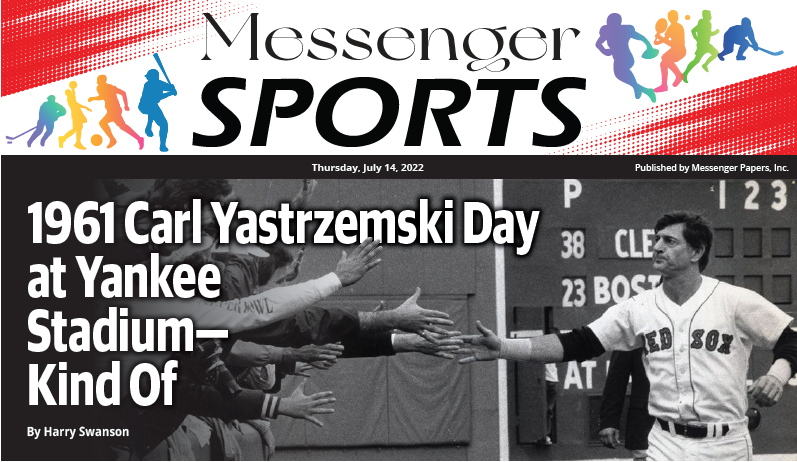Before Long Island’s own Carl Yastrzemski was the big-name Hall of Famer for the Boston Red Sox, he was the big-named superstar athlete from Bridgehampton High School.
He seemed to master all sports and carry each team to county and state championship playoffs. The sport itself didn’t matter–bowling, football, volleyball, and let’s not forget his all-time scoring records in basketball. Oddly, as good as he was, many considered his father, Carl Yastrzemski, Sr., to have been an even better athlete in his day.
After graduating from high school in 1957, Carl Yastrzemski, Jr. went on to Notre Dame University, where he majored in Business Administration. During the summer months that fell between his school semesters, both Carl, Sr. and Jr. played baseball for the Bridgehampton White Eagles and the Lake Ronkonkoma Cardinals. While with the Cardinals, the father and son duo played side by side on the left half of the infield. The two played in an exhibition game against the Ronkonkoma Fire Department. Home games were played at Newton’s Field on Hawkins Avenue. Sr. had the hot corner at third, and Jr. covered shortstop. They were both excellent defensive fielders and power hitters.
By mid-season, they were both hitting above .400. Jr. was also an outstanding pitcher in high school. By the fall of 1958, 14 of the 16 major league teams were scouting Carl Yastrzemski, Jr. The Phillies made an offer with a signing bonus of $75,000. The Red Sox offered him $100,000. The Yankees didn’t make much of an offer, according to both Yastrzemski’s—who were avid Yankee fans. But remember, the Yankees were winning World Series after World Series at the time.
Carl wanted to stay somewhat close to home, so the Red Sox were his only choice—although he wasn’t crazy about Fenway Park’s right field situation. By the spring of 1959, Jr. was playing for the minor league Minneapolis Millers, a triple A ball club in the American Association League. By 1961, he was playing his rookie season, replacing Ted Williams in left field for Boston.
In early May of that year, the Bridgehampton “Lions Club” was selling endless batches of discount baseball tickets to attend a double header at Yankee Stadium against the Sox. All the little leagues, players, coaches and families were notified. These were hot tickets to get. Everyone wanted to go and see the Long Island-born star play in the double header – which took place on Sunday, July 9, 1961 – 61 years ago this past weekend. The total cost was $8.50, which included two games and transportation by the Long Island Rail Road and NYC buses.
While I did not get the opportunity to go, I did do my best to watch the games on our 19-inch black and white television by constantly adjusting the rabbit ear antennas. The first game started at 2:04 p.m., and lasted 2 hours and 18 minutes. Meanwhile, a crowd of just fewer than 48,000 packed the stadium and cheered loudly with each Yastrzemski at-bat. This was 22,000 fans greater than their average attendance at the time.
Unfortunately for Carl, he went hitless in four at-bats as the hometown Yanks won Game One by a score of 3-0. The second game started at 4:58 p.m., and lasted 3 hours and 5 minutes. This game was altogether different for Carl. The Long Island star had 4 base hits in 5 at-bats, 2 runs batted in, and 3 runs scored, along with 2 stolen bases in Boston’s 9-6 victory.
On that day, it wasn’t as important that the other Long Island star, Whitey Ford, struck out Yastrzemski three times in an earlier game in June. To the Yankee organization, this was just an unofficial “Carl Yastrzemski Day.” But to all those locally invested, especially Bridgehampton, Lake Ronkonkoma and the rest of Suffolk County, this was as official as it could get.
People who saw him play for the Bridgehampton White Eagles said Carl could run like a deer. Lake Ronkonkoma Cardinals spectators claimed he ran the bases like Ty Cobb. Carl was OK as a player that rookie season, but the rest of his big-league career, which lasted through 1983, was what helped land him a first-ballot Cooperstown nod in 1989.
And it all started in our backyard.





